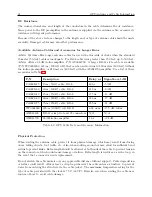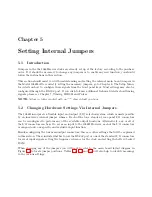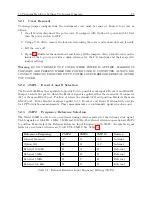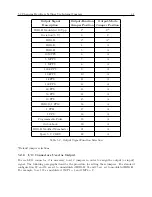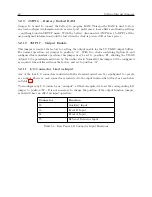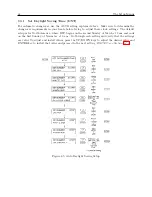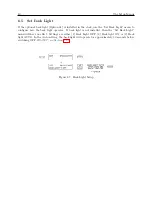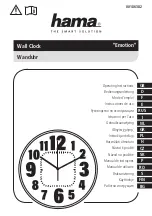
4.4 Technical Details on GPS, Antennas and Cables
25
Adjacent Signals
Although the standard RG-6 style cable is triple-shielded and has excellent shielding properties, be
cautious when routing near high power RF sources or alongside cables carrying high power RF, such
as transmitter cables. In these applications, consider using RG-11 style cable (P/N WC0004900).
Its quad-shielded design provides even more isolation.
Antenna Power
The RF preamplifier within the antenna requires 5 Vdc at 13 mA maximum for operation. A
power supply within the clock generates this voltage, which is applied to the antenna via the two
conductors of the coaxial antenna cable. Avoid shorting the center conductor to the shield of the
coaxial cable as it may damage the preamplifier. Conversely, a high-resistance connection or open
circuit would deprive the preamplifier of power. Either a short- or open-circuit condition in the
antenna cable will render the clock inoperable.
Prior to initial operation or if problems are suspected, perform the Antenna/Cable Operational
Test Procedure described in Section 4.2.
Connection to Antenna
The male Type F connector on one end of the antenna cable mates with the female Type F connector
on the antenna. Avoid placing mechanical stress on the cable attachment to the antenna.
Connection to Clock
The male Type F connector on the opposite end of the antenna cable connects to the female Type
F connector on the rear panel of the Substation Clock.
User-Supplied Antenna Cables
Any RF cable meeting the requirements described above for loss (
<
21 dB at 1575 MHz) and dc
resistance (
<
15 ohms total loop resistance) may be used with the clock. However, prior to using
a non-standard antenna cable, verify proper installation by performing the Power Supply Test and
Antenna Resistance Test above.
For additional technical details concerning the GPS, GPS antennas and antenna cabling see Ap-
pendix A, Technical Details and Specifications.
Summary of Contents for 1088A
Page 4: ...iv ...
Page 6: ...vi ...
Page 18: ...xviii LIST OF FIGURES ...
Page 23: ...1 4 Attaching Rack Mount Ears to 1088A B Series Clocks 3 Figure 1 2 Attaching Rack Mount Ears ...
Page 24: ...4 Unpacking the Clock ...
Page 32: ...12 Front and Rear Panels ...
Page 38: ...18 Connecting Inlet Power Input and Output Signals ...
Page 46: ...26 GPS Antenna and Cable Information ...
Page 48: ...28 Setting Internal Jumpers Figure 5 1 Model 1088B Main Board ...
Page 76: ...56 The Setup Menus ...
Page 112: ...92 Serial Communication and Command Set ...
Page 127: ...B 4 Physical Dimensions 107 Figure B 1 Suggested Mounting of the AS0094500 Surge Arrester ...
Page 128: ...108 Using Surge Arresters ...
Page 145: ...C 5 Option 04 Parallel BCD Output 125 Figure C 4 Option 04 Output Jumper Settings ...
Page 146: ...126 Options List Figure C 5 Option 04 Board Layout and Jumper Locations ...
Page 166: ...146 Options List Figure C 12 Option 17 Board Layout and Jumper Locations ...
Page 187: ...C 16 Option 20A Four Fiber Optic Outputs 167 Figure C 22 Option 20A Jumper Locations ...
Page 194: ...174 Options List Figure C 24 Option 23 Internal Jumper Setup ...
Page 196: ...176 Options List Figure C 25 Option 27 Jumper Locations ...
Page 214: ...194 Options List Figure C 28 Option 29 Connector Signal Locations ...
Page 270: ...250 Options List ...














